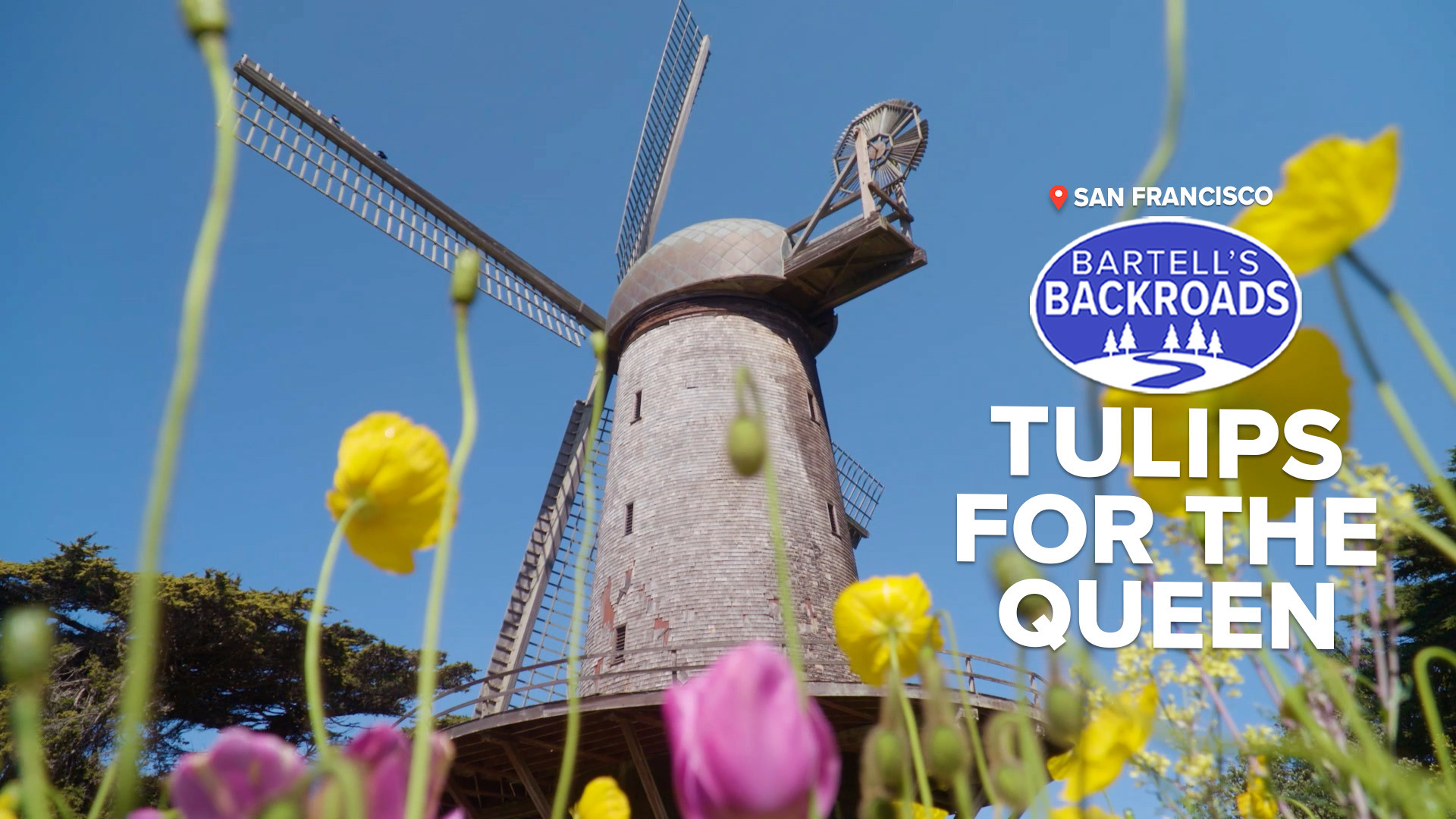SAN FRANCISCO — Springtime in the Bay Area may be one of the best times to take a picture. It's especially true if you visit the western edge of Golden Gate Park when the flowers are in bloom and the sun hits the Dutch windmill just right.
“The other day my daughter said 'your garden is blowing up on Instagram,'” said horticulturalist Pat Quinn.
You can thank Quinn and his team for the beautiful backdrop at the Queen Wilhelmina Garden, but if you tried to take a picture here in the early 1900s, it would have looked very different. Historian Christopher Pollock says instead of seeing flowers and cypress trees, all you would have seen were sand dunes.
“Yes, and I don’t think up until 1962 this would have even had grass,” said Pollock.
In the 1880s, city leaders had big dreams for San Francisco, one of them being a giant park rivaling New York’s Central Park. The problem was the only place big enough to build it was nothing but sand dunes.
Pollock says in order to get plants to grow, loads of horse manure were dumped onto the dunes and fresh water from the city was pumped to the plants. It took time but the process worked!
The horse manure was free, but city leaders soon found pumping water was costly. This is where the Dutch windmill came in.
“It was found that in parts of the park, including near the salty Pacific Ocean, there’s in fact fresh water underground in what’s called the West Side Basin,” said Pollock.
TAKE A TRIP ON BARTELL'S BACKROADS:
► See an interactive map of everywhere John has visited on the backroads
► Watch all of the Backroads videos
► Follow John on Facebook
In 1902, Park Superintendent John McLaren talked city leaders into building the Dutch windmill to extract the fresh water below the sand dunes.
“To my knowledge no Dutch people were involved in this,” said Pollock.
The 102-foot-long spars of the Dutch-inspired windmill turned gears and pumped out 20,000 gallons of water an hour to thirsty plants, but only when the wind blew. Soon, electric pumps took over and the windmill fell into disarray.
“Although it could be functional, it does not have all the mechanisms inside today,” said Pollock.
In 1961, the windmill got a facelift thanks to donations from grassroots efforts. Then in 1962, a Memorial Garden was planted to honor the death of Queen Wilhelmina, of the Netherlands.
“Because of her long reign she had an incredible amount of popularity,” said Pollock.
Standing for over 120 years, the Dutch windmill is the symbol of Golden Gate Park's ingenuity and resilience, but it’s showing its age and there are no plans for renovations. For now, the Dutch Windmill remains a motionless backdrop, only to be admired from the garden.
ANOTHER ICONIC PARK ON THE BACKROADS: Griffith Park is an icon, but its founder is not. Here's how a fake "colonel" who shot his wife changed the urban landscape of Los Angeles.

















